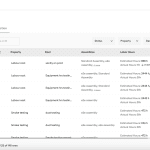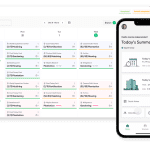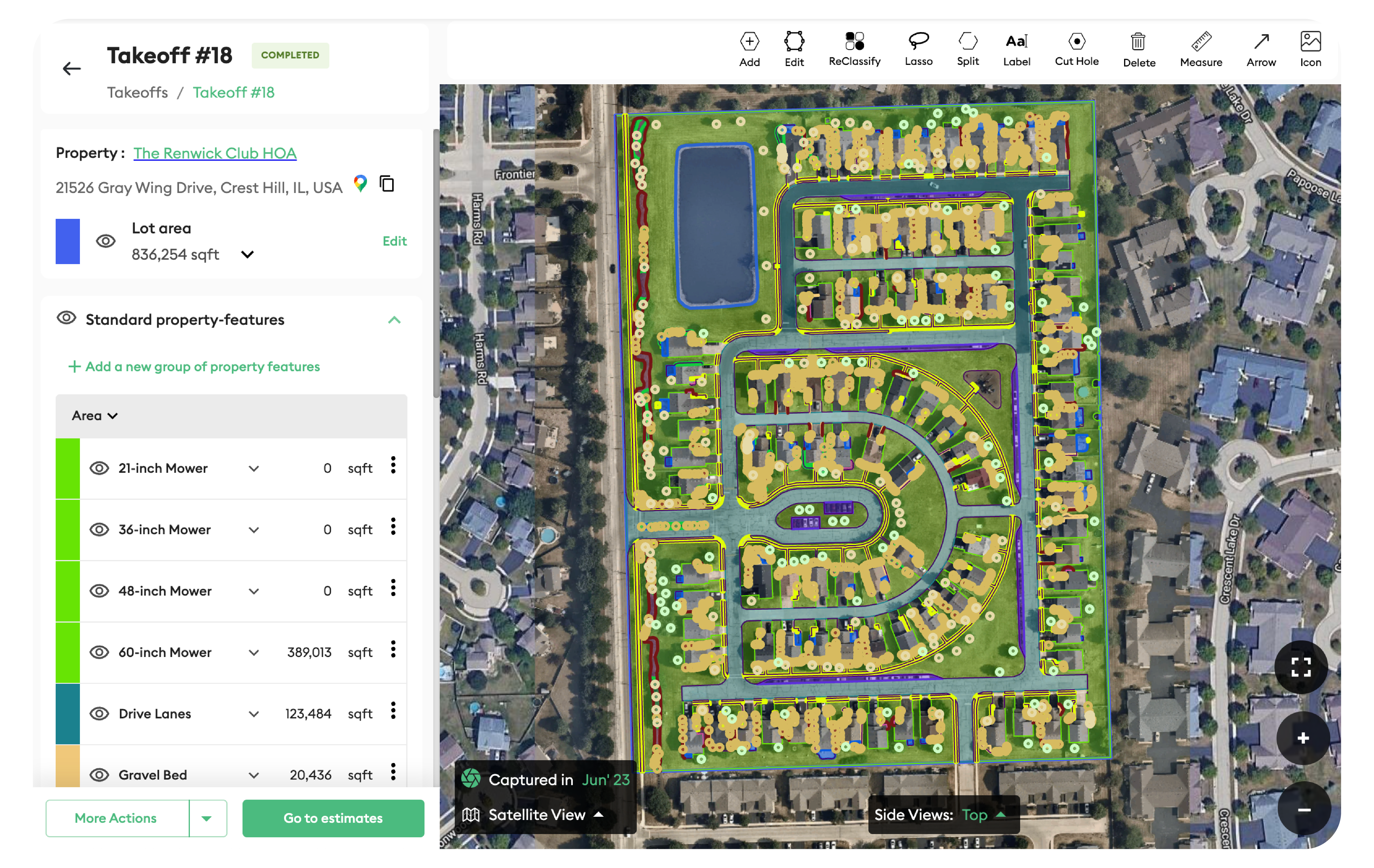
Sponsored content by Shiva Dhawan, CEO, Co-founder, Attentive.ai
For commercial landscaping businesses, profit leaks often stem up. Two key reasons are inaccurate estimates and the opportunity cost of manual sales processes. The former risks the viability of each project, while the latter squanders precious time that could be spent securing new business.
But identifying these leaks is only half the battle; the real victory lies in effectively plugging them.
This blog will guide you through common pitfalls, from the labor lost in manual sales processes to the hidden expenses that silently drain your resources, and introduce you to Accelerate, the ultimate tool your business needs.
Manual sales processes lead to revenue loss
No, it is not far-fetched.
Accurate measurements are a must for the profitability of any project, especially in commercial landscaping, where the scope and specifications can vary widely. The ability to price each service competitively, taking into account its demand and the degree of specialization required, hinges on precise, upfront assessments of the project’s dimensions and requirements.
Traditional methods of property measurement, however, are fraught with challenges that can directly impact your bottom line.
Let’s understand the two key ways a manual sales process affects your margins.
The Challenge of Inaccurate Estimates
Creating estimates that are both detailed and cost-based is about building a proposal that speaks to the client’s needs and aligns with their value perception.
Every landscape project entails a diverse array of services, materials, and labor inputs, each with its own cost implications. By meticulously itemizing these components and applying a desired markup, businesses can craft bids that are competitive, fair, and profitable.
Incorporating comprehensive considerations — including landscape production rates, material and labor costs, service features, seasonal frequency, overheads, and taxes — into the estimate ensures that the final price is not only competitive but also keeps your projects profitable.
This thorough approach not only enhances the accuracy of your bids but also demonstrates to clients your commitment to transparency and value.
Ultimately, the goal is to arrive at a price that meets the client’s expectations and secures a reasonable profit for your company.
However, inaccurate estimates stand as a significant hurdle in the path to securing profitable projects. This inaccuracy predominantly arises from traditional methods of property measurement — methods that are not only time-consuming but riddled with the potential for human error.
These errors can lead to bids that either overestimate or underestimate the project’s scope and costs, resulting in lost bids or squeezed margins.
Let’s delve deeper into how this inaccuracy manifests and the impact it has on your business:
Manual Errors
The traditional approach to measuring properties involves physical site visits, which are inherently inefficient and prone to errors.
And guess what? Just a 10% underbid due to these inaccuracies could see over $50K disappearing from your bottom line per salesperson yearly.
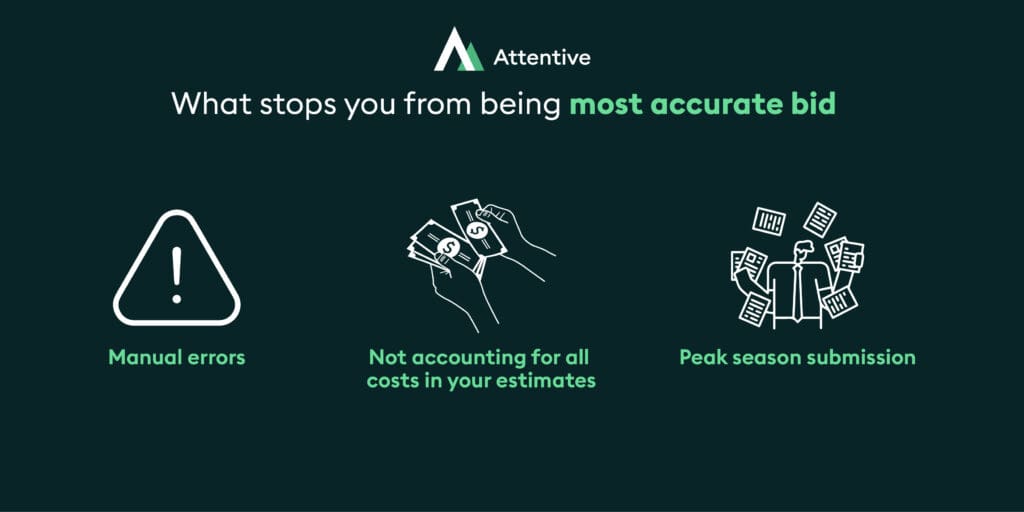
Cost Underestimation
Another key reason leading to inaccurate bids is not accounting for all the nitty-gritty costs of your projects. Think about it – every little thing from the gas your crews use getting to the site to the wear and tear on your equipment and even the fees for dumping waste. These expenses might not seem like much on their own, but together, they can add up to a significant cost.
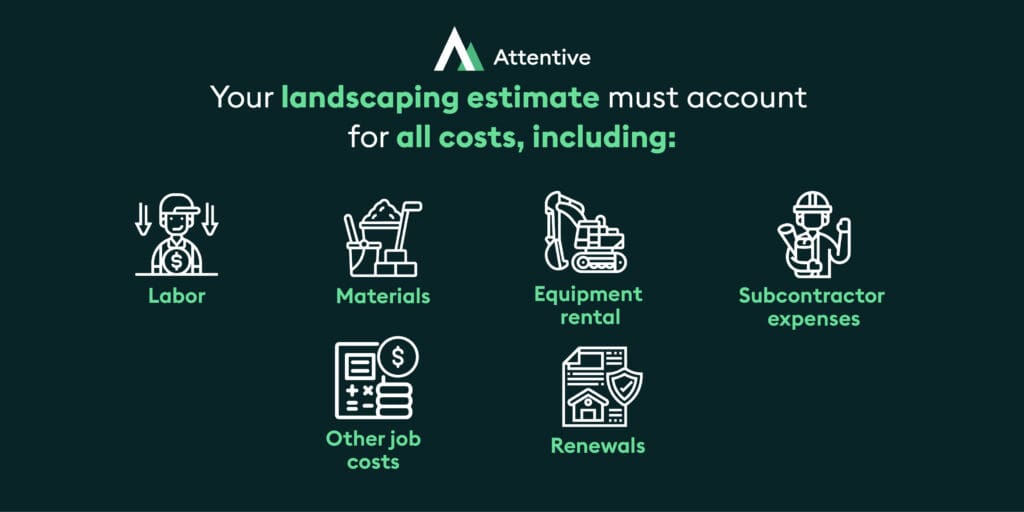
If you’re not keeping a close eye on these so-called “other job costs” (OJC), you might end up quoting a price that barely covers the actual expenses, leading to unprofitable projects.
Peak Season Inaccuracies
During peak season, the rush to push proposals out the door leads to bids that are not only less competitive due to either overestimation or underestimation but also risk compromising the quality and reliability perceived by the client.
Such inaccuracies not only jeopardize the immediate financial potential of a project by either leaving money on the table or leading to outright losses but also threaten long-term relationships with clients who seek dependability in their contractors.
The True Cost of Opportunities Lost
Beyond the tangible losses incurred through inaccurate estimates lies a subtler yet equally significant challenge: the opportunity cost associated with manual sales processes. The time and resources dedicated to traditional measurement and estimation methods represent a considerable diversion of your sales team’s potential. This diversion can significantly impact your business’s growth and customer relationships, manifesting as:
Not Enough Facetime With Prospects/Clients
Sales teams spending extensive periods on site measurements could instead focus on client engagement and business development activities.
Yes! Every minute you spend measuring is a minute not spent selling. In fact, sales teams spend up to 6 hours weekly on manual site measurements. That’s almost two months of lost time per salesperson annually!
Consider the substantial cost loss here. If your sales team dedicates even 10-20% of their time to measuring properties, on average, you are wasting nearly 300 hours — or roughly two months — of lost time per sales employee each year.
Reduced Proposal Output
The labor-intensive nature of manual estimates limits the number of proposals your team can manage, constraining your business’s growth potential.
As an example, if your sales team takes an average of 6 hours for manual site measurements and proposal drafting and your success rate is 25%, they secure $50,000 of business for 24 hours of work.
With a conservative improvement of 67%, the same team can send a proposal in just 2 hours and generate $150,000 worth of business.
Therefore, manual processes are costing your business an additional $100,000 in revenue, simply due to the restricted number of proposals your team can handle.
Customer Relationship and Ancillary Sales Impact
The slow turnaround on proposals not only hampers your responsiveness but also affects your ability to nurture client relationships effectively and win ancillary business.
For instance, the time spent on measurements could be used for conducting thorough follow-ups on proposals sent, providing personalized consultations, or exploring ancillary sales opportunities with existing clients. This increased engagement not only strengthens client relationships but also maximizes the revenue potential of each interaction.
What Can Help Your Sales Teams?
End-to-end sales automation. Yes. What commercial landscaping companies like yours need is an integrated end-to-end system that automates their sales process, from property measurements to creating estimates to generating winning landscaping proposals.
Attentive.ai’s AI-powered business management software, Accelerate, not only automates property measurements but also ensures your estimates are detailed, cost-based, and accurate.
No more guessing games. With accurate data feeding into your estimates, you’re looking at proposals that hit the mark every time, safeguarding your profit margins like never before.
All you need to do is pop in the address, and boom – you get precise property measurements using the latest in aerial imagery and AI.
Accelerate’s sales module also simplifies your estimating process down to just a few clicks. This means you can get accurate estimates out to your clients faster, helping you respond quickly and efficiently.
You can also tailor your proposals quickly to meet exactly what your client is looking for. With Accelerate, making those little tweaks or big changes is hassle-free. This flexibility ensures your proposals hit the mark every time, giving you an edge in winning those bids.
This not only speeds up your sales process but also makes your proposals more competitive and precise, giving you an edge in winning those bids and safeguarding your profit margins.
To learn more about how Accelerate can make your end-to-end sales process more efficient, visit us at attentive.ai/accelerate.



